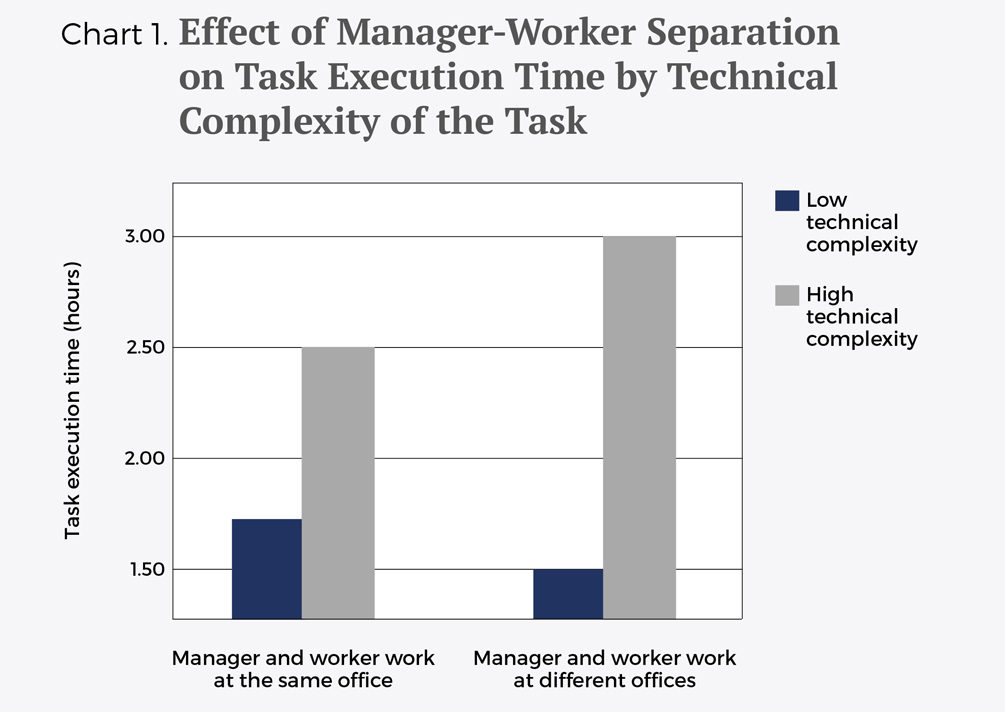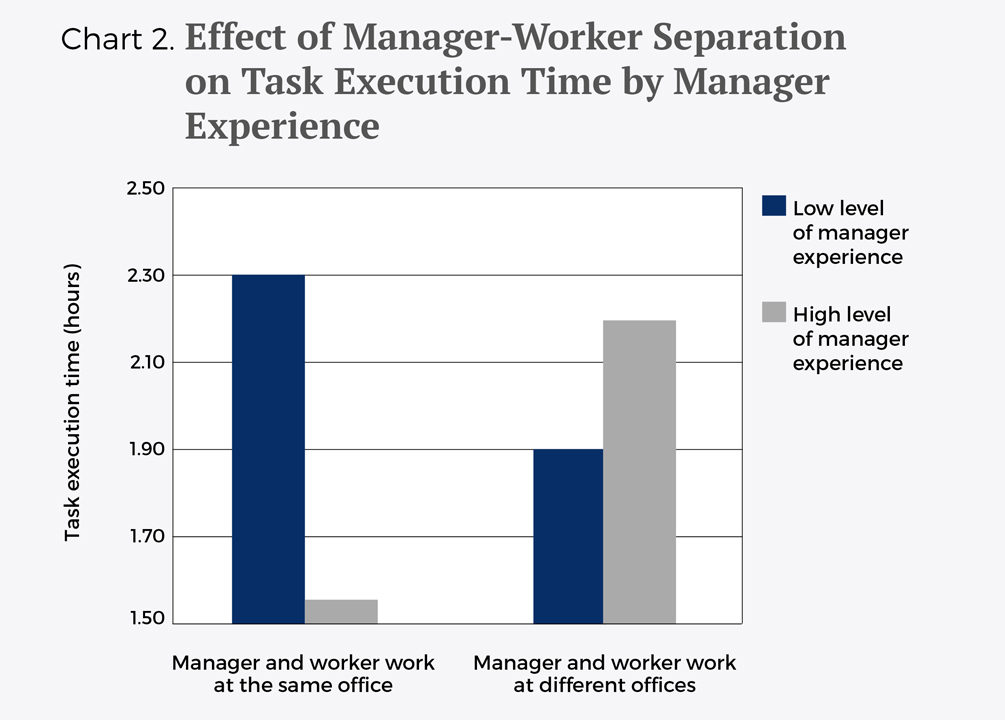Distributed work is an increasingly common reality in modern organizations, making situations in which managers and workers interact remotely more and more routine. With the spread of globalization, many companies allocate tasks to employees operating from different locations depending on availability, cost and competence. As a result, millions of workers are led by managers whom they do not see on a regular basis. However, despite the increasingly powerful technologies available to monitor and interact with workers, many managers still view remote supervision as a challenge in their daily work.
In a study by The Economist Intelligence Unit, 46% of managers considered leading people from a distance to be their main challenge. Likewise, an Institute of Leadership and Management study of managers across a variety of industries found that more than 80% of respondents agreed that remote supervision hindered their ability to ensure consistent practices and identify problems early on, as well as avoid misunderstanding of instructions and directions.
Many management experts hold that remote supervision has a negative effect on worker performance. They argue that when managers communicate with their employees via technology, nonverbal cues are lost, rendering the manager less effective when it comes to controlling, coaching, helping, and setting goals for his or her team. Geographical distance can also hinder real-time communication, reducing managers’ ability to quickly support workers or detect situations of employee distress in a timely fashion. Finally, manager-worker separation also reduces non-task interaction, significantly hampering the manager’s ability to foster workers’ engagement, reinforce strengths and idiosyncrasies, and take individual workers’ personal and social situations into account during task execution.
The physical location of a project manager in relation to the workers is another variable that companies should consider when putting together a team.
Three Key Factors
Using data from a company with employees and managers operating from multiple sites around the world, we analyzed the costs of remote interaction and the circumstances in which they tend to be highest. Perhaps our most unexpected and interesting finding was that, in fact, manager-worker separation can sometimes be beneficial, that is, that remote supervision can lead to superior worker performance.
Specifically, our research suggests that organizations should take into account factors such as task complexity, work configuration, and manager characteristics when deciding whether workers and managers should be located in the same place.
1. Task Complexity
Technically complex tasks increase the negative effects of separation. The time it takes the worker to finish them increases considerably. However, when the task is technically simply, whether the manager is “close” or “far” does not affect the worker’s task execution times. Chart 1 shows these differences.

Similarly, when the project requires greater coordination, another aspect that increases the complexity of the task execution, having the manager near the worker improves execution times. However, when the worker can carry out the project autonomously, without having to coordinate with anyone else, separation does not have a negative impact.
2. Work Configuration
The second important factor is the availability of experienced colleagues at the same workplace. When a worker has access to peer expertise, separation from the manager does not seem to affect his or her task execution times. In other words, physical proximity to experienced peers reduces the negative impact of manager-worker separation.
3. Manager Experience
Finally, another aspect to be borne in mind is the manager’s supervisory experience. In our study, we found that manager-worker separation can have positive overall effects when the manager has little or no experience supervising workers. Managers who had recently been promoted from a technical to a managerial position tended to exert too much control over their subordinates’ work, which can reduce worker productivity. Geographical distance can be instrumental in making it harder for rookie managers to interfere too much in workers’ tasks. When managers are new, not only does remote supervision not have a negative impact on performance, it can even boost it, as shown in Chart 2.

In conclusion, our research showed that the geographical separation of managers and workers usually has a negative effect on performance, but that this effect varies depending on the circumstances and, in some cases, can even be positive, improving performance. Therefore, the physical location of a project manager in relation to the workers is another variable that companies should consider when putting together a team.
About the research
Remote work has always existed, but with globalization the model has become more pronounced. The empirical research whose conclusions are described in this article was conducted at one of the top five IT consulting service companies, with multiple sites around the world. We collected 13,435 software maintenance tasks executed by 77 workers over a two-year period.
© IE Insights.











